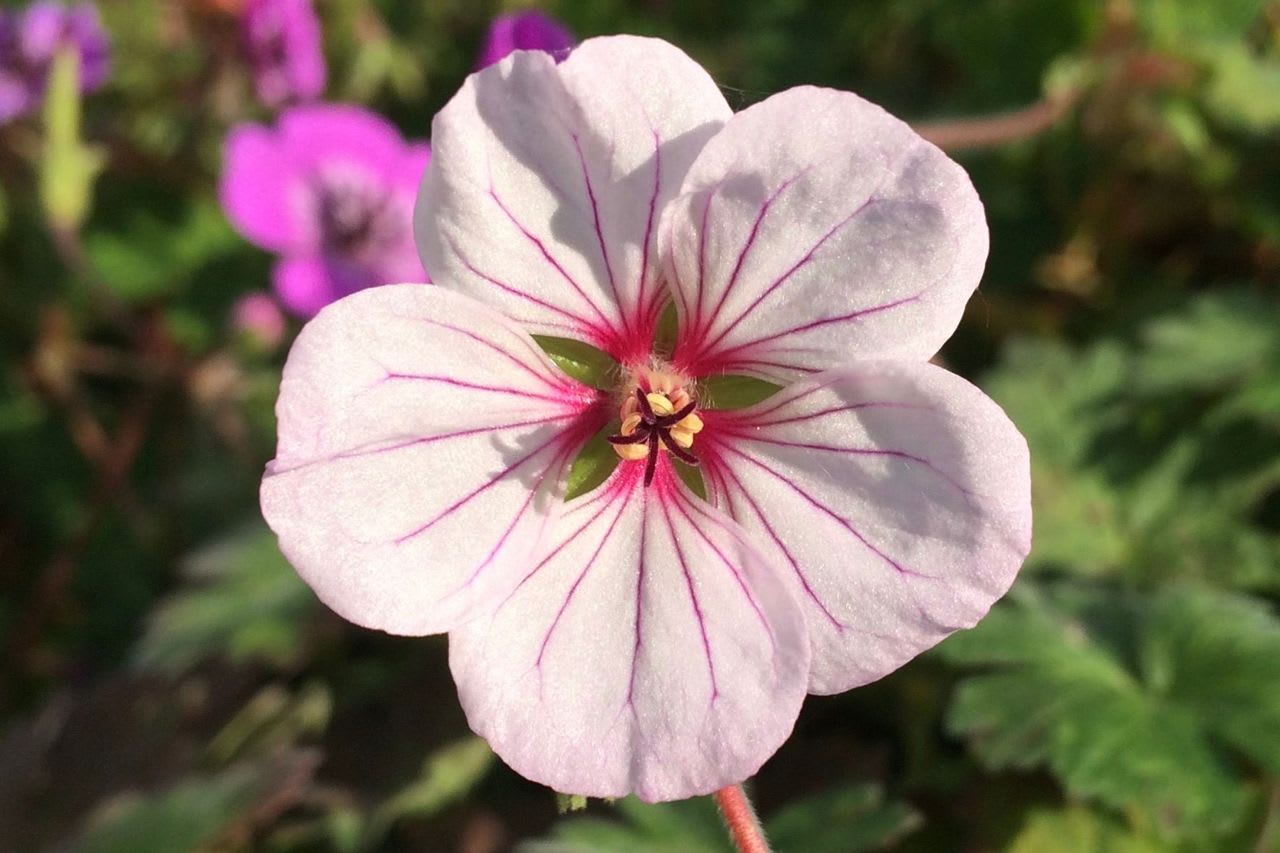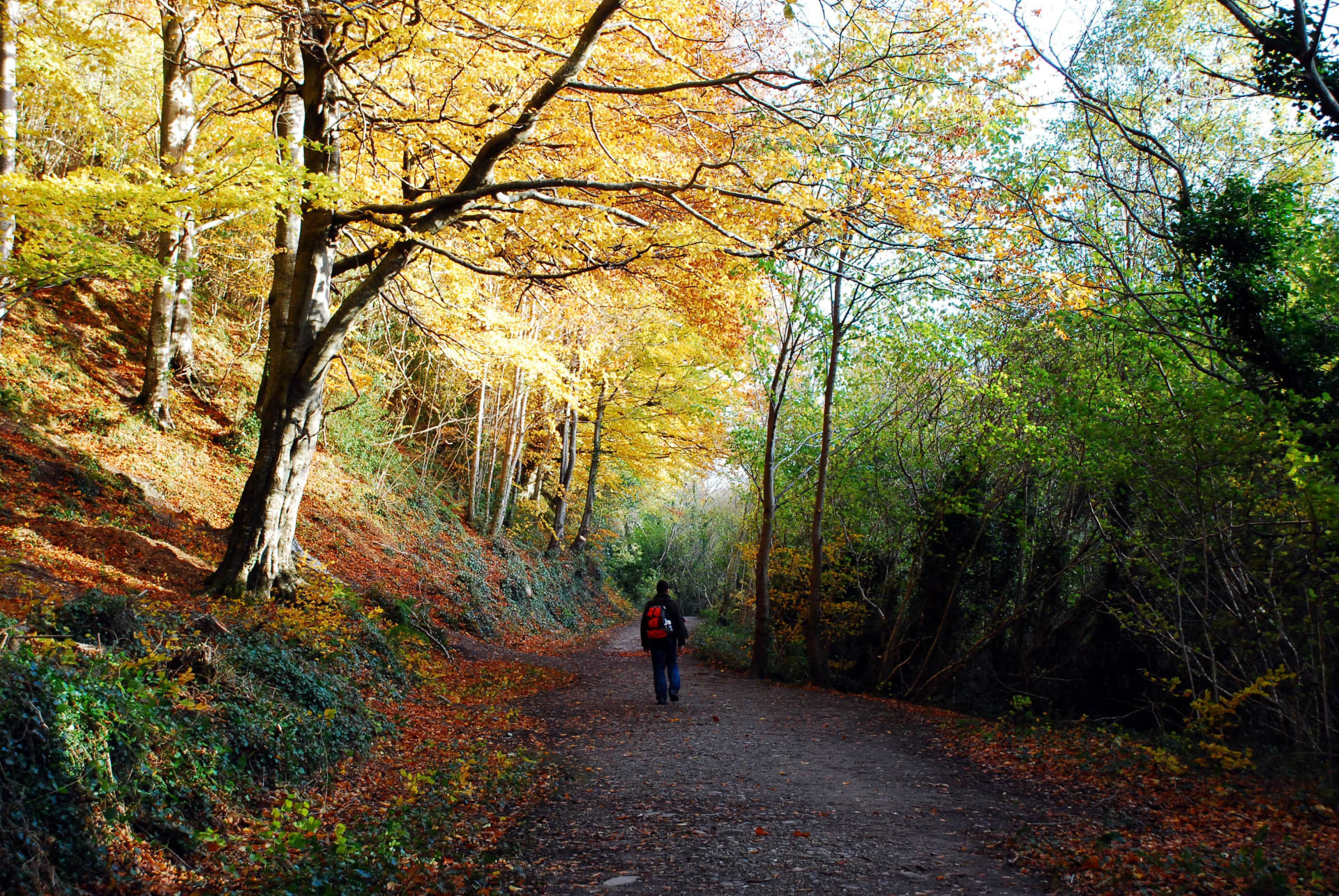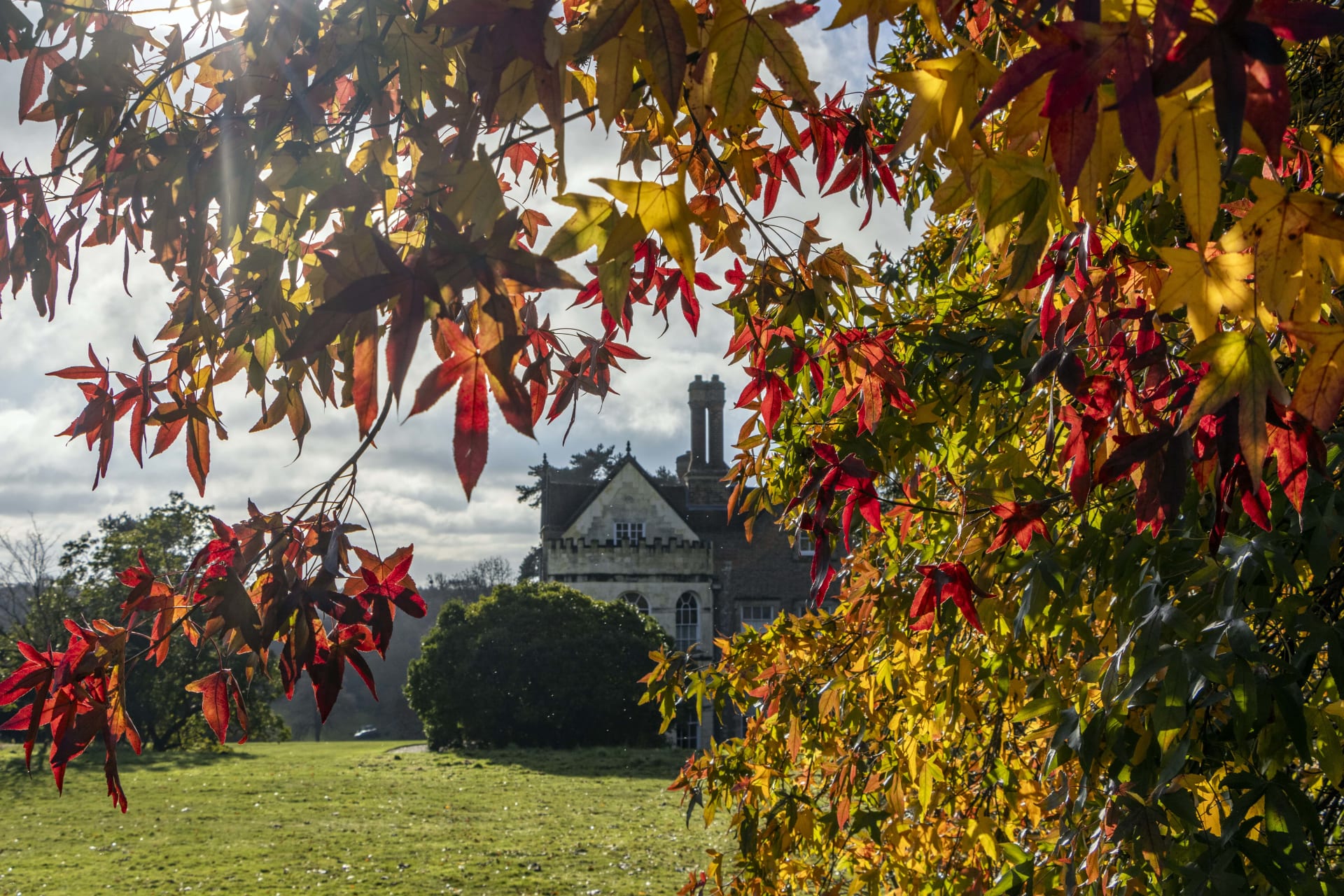Hardy Geraniums or Cranesbills are a large genus with around 422 species of annuals, biennials and herbaceous perennials, some of which may be semi-evergreen. Not to be confused with Pelargoniums, Cranesbills can be found throughout the temperate regions of the world, many coming from the eastern Mediterranean whilst others grown in the UK are British natives. Whilst their name originates from the Greek word for ‘crane’, the English name comes from the seedhead capsule of some species which looks like a crane’s head and bill; the ovary forming the head, the prolonged stigma creating the appearance of a beak.
So, what makes these plants so useful in our garden?
First, their flowers provide a long season of nectar and pollen which are attractive to pollinators such as bees and hoverflies; the blue, mauve and purple varieties are particularly attractive to bees. Flowers are saucer-shaped, sometimes flat or star-shaped, and can be white, pale to dark pink, purple or blue. Often one colour, some varieties having veined flower petals, making them particularly attractive. Their palmately lobed leaves can frequently be aromatic and some varieties colour in a range of golds and reds as we head into autumn.
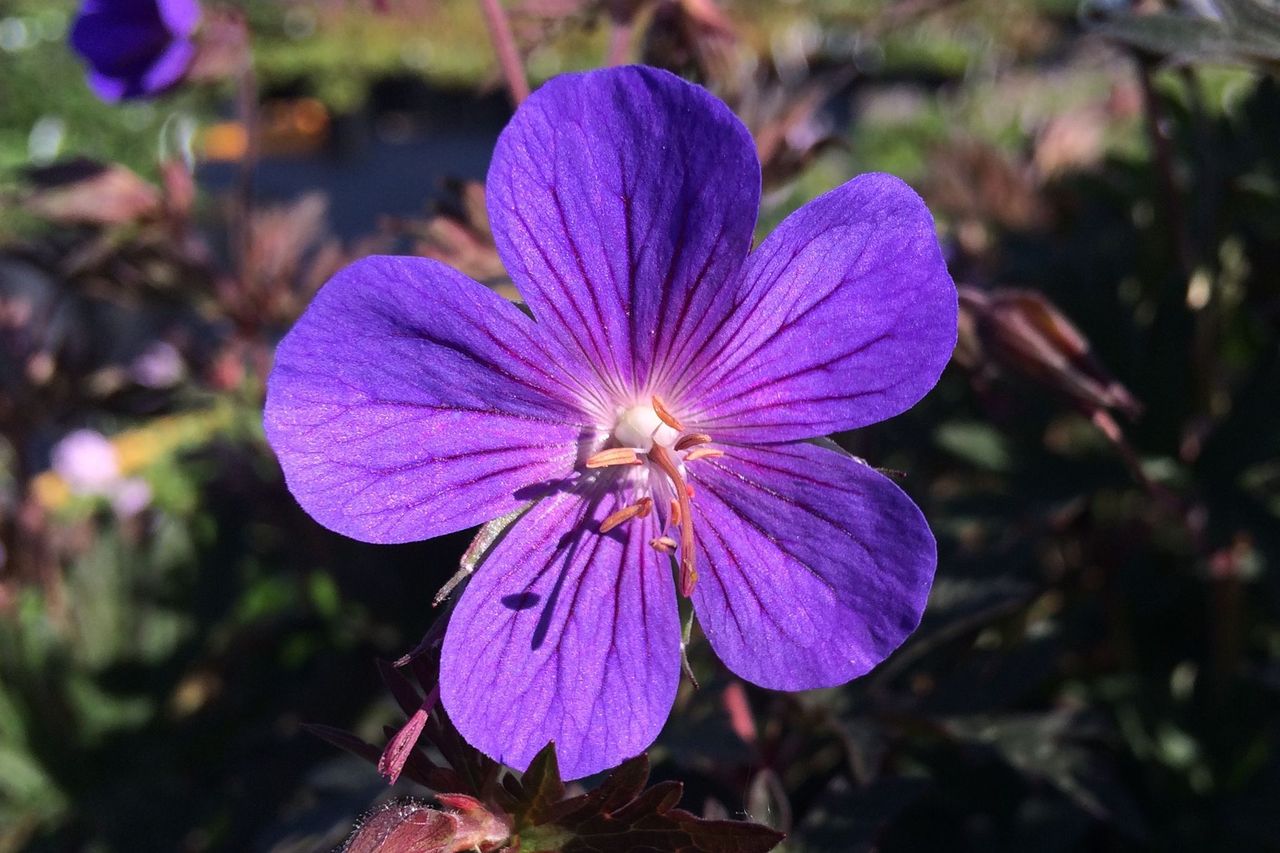 Cranesbills are generally long-lived plants which will grow in sun, semi-shade and shade provided that their roots do not get water-logged. The smaller varieties will grow happily in alpine or rock gardens, forming trailing, spreading or mat-forming clumps to about 15cm tall. Varieties growing 30 to 45cm tall and spread can be planted at front of border or as effective ground cover in a woodland or wild garden or even in pots. Taller varieties such G psilostemon, originating in NE Turkey can grow up to 1.2m and G maderense from Madeira, can grow as tall as 1.5m. Both varieties can be shorter lived and grown as biennials they can be perfect for growing towards the back of borders, looking good when interplanted with ornamental grasses that grow to a similar height.
Cranesbills are generally long-lived plants which will grow in sun, semi-shade and shade provided that their roots do not get water-logged. The smaller varieties will grow happily in alpine or rock gardens, forming trailing, spreading or mat-forming clumps to about 15cm tall. Varieties growing 30 to 45cm tall and spread can be planted at front of border or as effective ground cover in a woodland or wild garden or even in pots. Taller varieties such G psilostemon, originating in NE Turkey can grow up to 1.2m and G maderense from Madeira, can grow as tall as 1.5m. Both varieties can be shorter lived and grown as biennials they can be perfect for growing towards the back of borders, looking good when interplanted with ornamental grasses that grow to a similar height.
Most varieties available in the UK will withstand our winter climate if planted in any moderately, well-drained soil but the smaller species prefer humus-rich soil mixed with horticultural grit to improve drainage, planted in full sun. As the plants start to leaf up in early to mid-spring, apply a balanced liquid fertiliser monthly from March to early September. Once the plants have flowered (which can be during May/June for their first flush) cut the flower stems hard back along with the older leaves to encourage the production of fresh leaves and a further flush of flowers in July/August. As the days get shorter and colder, hardy geraniums will die back. You can mulch with leaf mould, well-rotted compost or manure over winter and – as new shoots appear in spring – pull off the dead old leaves revealing the new pink and green leaf shoots.
If clumps start getting too large for their allotted space they can be divided in spring. Once lifted, tease the roots apart and replant in smaller clumps. They can also be grown from basal-cuttings taken in early or mid-spring and rooted with bottom heat. Many varieties will happily self-seed if the dry flower heads are not removed promptly.
When it comes to selecting the most suitable varieties for your garden, you may be spoiled for choice. Although most garden centres stock a reasonable range, if you are looking for more unusual varieties it is worth buying them from a specialist Cranesbill Nursery online (like cranesbillnursery.com). You can also buy plants bare-rooted until March, to plant out in early to mid-May.
In parts of Oxfordshire, during the early summer months you will often see the wild flowering Geranium pratense growing by the roadside amongst the verge grasses. Their violet blue flowers deepen when growing on chalky soil. This species is also often available to buy from garden centres and specialist plant nurseries and will grow happily in your garden, to a height of around 90cm with a spread of 60cm.
RECOMMENDED VARIETIES
If you are looking for bright pink flowers, rather than blue, G Ann Folkard has magenta-purple flowers. It will grow in full sun, partial shade to a height of up to 60cm by spread of 60cm.
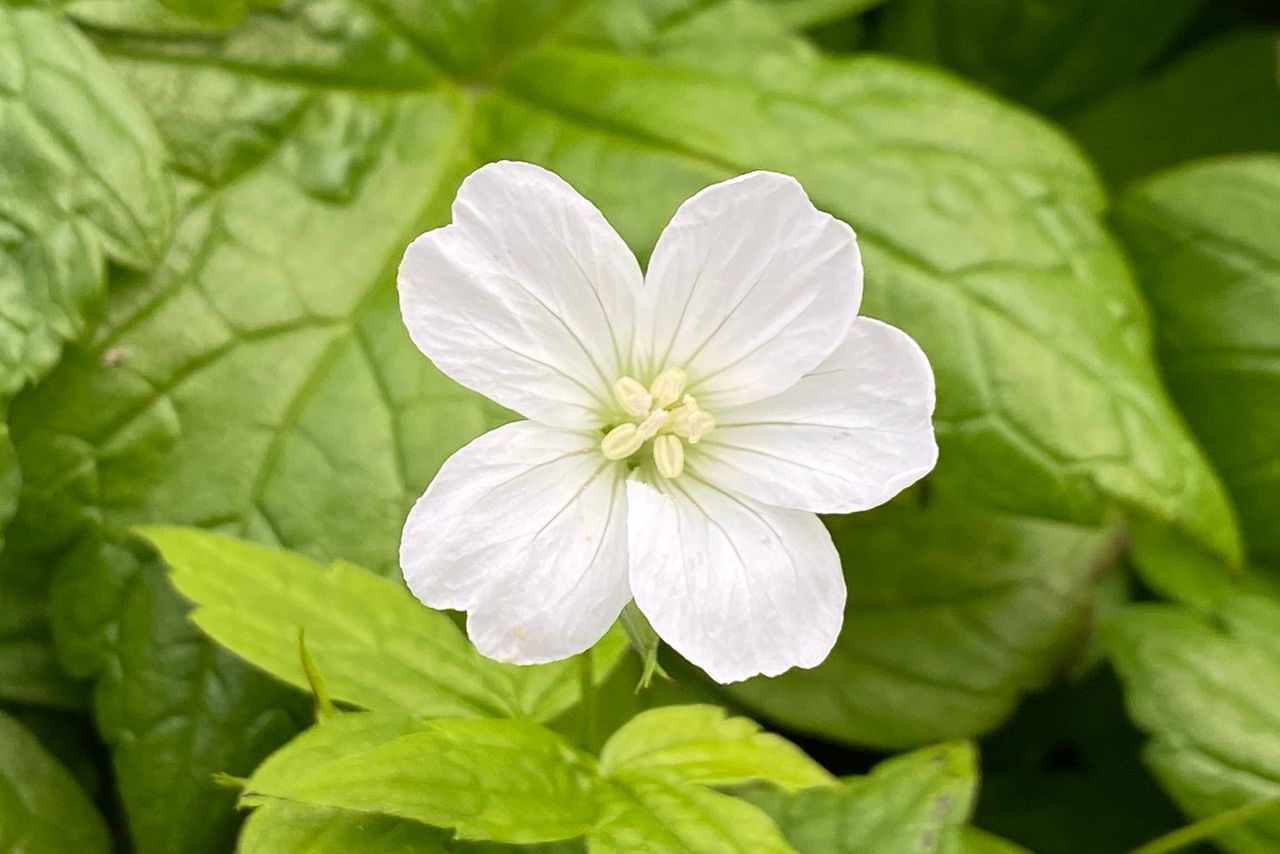 If you are looking for varieties with veining in the flowers, G sanguineum or Bloody Cranesbill offers different varieties with white, pale pink and deep magenta flowers and darker veining. They grow from a height of between 10cm and 30cm depending on which you select and are reliably hardy. Another veined variety is G renardii with white or pale mauve flowers with prominent violet veining. It grows up to 50cm tall and spread and is drought resistant.
If you are looking for varieties with veining in the flowers, G sanguineum or Bloody Cranesbill offers different varieties with white, pale pink and deep magenta flowers and darker veining. They grow from a height of between 10cm and 30cm depending on which you select and are reliably hardy. Another veined variety is G renardii with white or pale mauve flowers with prominent violet veining. It grows up to 50cm tall and spread and is drought resistant.
If you love rich violet blue flowers, opt for G x magnificum which forms magnificent clumps of the most beautiful flowers during mid-summer. It grows to a height of 60cm by 90cm spread. Other blue varieties to look out for is the ever popular G Johnson’s Blue and Orion which is similar but is a seedling from G Brookside, which is also a blue-mauve variety. Another wonderful specimen is G himalayense Kaya’which has piercing, sapphire blue flowers and red-bronzed tinged foliage. This plant loves sun and flowers from May to August, height 35cm by spread 40cm.
The himalayenses are good all-rounders: they come in blue or white and enjoy sun or part shade. They will spread to an extent via the underground runners they produce. They vary in height and spread between varieties and so can work well as either front or mid-border plants, plus hey are a big hit with bees and other pollinators. They will usually offer a good second flush of flowers too, after being cut back mid-season. They are easy to grow, so perfect for beginners, and ideal for use in gardens where one wishes to encourage wildlife.
Look out for are G nodosum Silverwood which has pearlescent white flowers and bright, glossy foliage. It grows happily in shade rather than sun, so is a valuable plant to grow where nothing else will. Flowering from June to September it grows to 30cm x 40cm. Another white flowering variety, this time with a reddish pink centre and veins, is a hybrid Coombland White which will grow in full sun. Hybrid varieties are the results of cross pollination between two species, either pollinated by the bees or with human intervention. Hybrids tend to be sterile, unable to produce seeds, which then extends the length of the flowering period. This plant grows 25cm x 35cm so is ideal for the front of a border.
Images kindly supplied by Gary Carroll from CranesbillNursery.com

